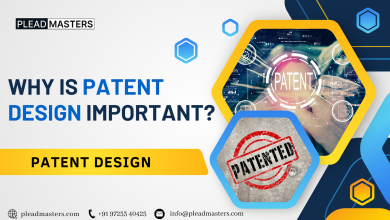What is a patent design?

A patent design is one of the important intellectual properties. Legal protection is granted to patent design for the exceptional visual qualities of the manufactured item. The aesthetic appeal of the product or the non-functional aspect of an object is protected under a design patent. The protection against the piracy of design is given under a design patent. The protection of design patents is granted with the aim to encourage creativity in the industrial and manufacturing sectors. A design patent makes a product attractive and it also adds commercial value to it.
Patent design constitutes the ornamental or aesthetic features of an article. A design patent may consist of three-dimensional features, such as the shape of an article, or two-dimensional features, such as patterns, lines, or color. The design adds value to the product and enables to build goodwill for the brand. The holder of the design patent benefits from the novel patent design as the appearance of the product appeals to the customers over and above the quality of the product.
A patentable design is any new, original, and ornamental design for an article of manufacture. The patent design must be registered in order to seek protection against unauthorized use. The registration under design patent provides broad protection. Patent design is termed Industrial design as per the World Intellectual Property Organization (WIPO) classification of intellectual property. In the USA, it is protected as a patent design under the Title 35 of the US Code 35 U.S.C. 171. In India, design is protected under the Design Act of 2000.
How to patent a design
A design patent protects the aesthetic characteristics of an article manufactured. The US design patent is granted by the US Patent and Trademark Office (USPTO). Similarly, in India, the application for the registration of a design is filed before the Controller of Designs.
A design to be eligible for registration as a patent design must satisfy the following –
- A design should be new or original
- It must be non-obvious
- It must have aesthetic features.
- It must be capable of reproduction
- It must not be disclosed to the public anywhere by publication in tangible form or by use or in any other way prior to the filing date, or where applicable, the priority date of the application for registration.
- It must be significantly distinguishable from known designs or a combination of known designs.
- It must not comprise or contain scandalous or obscene matter.
- It must not be a mere mechanical contrivance.
- It must be applied to an article and should appeal to the eye.
- It must not be contrary to public order or morality.
To register a patent design, an application has to be filed with the USPTO. The patent design application filed before the USPTO includes –
- Preamble, stating the name of the applicant, title of the design, and a brief description of the nature and intended use of the article in which the design is embodied;
- Cross-reference to related applications.
- Statement regarding federally sponsored research or development.
- Description of the figures of the drawing;
- Feature description;
- A single claim;
- Drawings or photographs;
- Executed oath or declaration.
The application for registration of the patent design is accompanied by filing fees, search fees, and examination fees. In the case of small entities consisting of an independent inventor, a small business concern, or a non-profit organization these fees are reduced to half.
The application for a design patent is not disclosed until the grant of registration in countries like the USA, Canada, and Japan.
The design application in India before the Controller of Designs includes –
- Form -1 containing details of the applicant
- A representation of the article in the form of drawings or photographs including computer graphics highlighting its novel and unique features
- A statement of novelty and disclaimer
- Priority documents (if any) in case of convention application claimed
The applicable fees are to be paid along with the application. Prior to filing an application, it is necessary to decide the class under which the registration of the design patent is sought. The Locarno Agreement lists the international classification of industrial design.
The application for registration of patent design can be refused if it fails to satisfy the statutory requirements including novelty, non-obviousness, and originality. In addition to this if the applicant fails to respond to the inquiry or provide the required answers to the satisfaction of the office it may result in refusal.
International registration of patent design can be made under the Hague system. Hague Agreement was adopted for the international registration of industrial design. The Hauge System creates a simple mechanism for the international registration of industrial designs in various countries that are signatories to the Agreement. A single international application is filed with the International Bureau of the World Intellectual Property Organization (WIPO) in Geneva, Switzerland. The Hague system enables the design patent owner to obtain registration for the design patent in an economical way with the least formalities. This also minimizes administrative work.
Design patent examples
Patent designs are applied to a wide variety of products of industry and handicraft items such as packages, containers, furnishing goods and household goods, lighting equipment, jewelry, electronic devices, and textiles goods. Patent designs are also relevant to graphic symbols, graphical user interfaces (GUI), and logos.
For a better understanding, a design patent can be an ornamental design on jewelry, furniture, computer icons, fonts, screen layouts for apps or software programs, and beverage containers.
There are numerous examples of design patents such as the curvy Coca-Cola contour bottle, Apple’s iPhone, Volkswagen Beetle, Dysons vacuum cleaner, Hermes Classic Kelly bag, the classic Channels suit, and Crocs Shoes. Another example is Google’s U.S. Design Patent No. D599,372, which is a Graphical user Interface for a Display Screen of a Commutations Terminal and covers the Google homepage.
Design Patent Classification
Locarno Agreement was concluded at Locarno in 1968. Locarno Agreement established the design patent classification. It is also termed Locarno Classification. It is an international classification system for industrial designs or patent designs. The Locarno Agreement is a multilateral treaty administered by WIPO. The Locarno classification is used by national offices that help in filing an application for the registration of design patents under a single classification system. The Locarno classification consists of 32 classes that are further divided into 237 subclasses with explanatory notes. There are 5000 entries arranged in alphabetical order. The classes and subclasses provide a general indication as to the type of goods belonging to each class and subclass. The explanatory notes give more detailed information about a class in general or a subclass in particular. The alphabetical list of goods constitutes the most detailed level in the structure. India in January 2021 formally adopted the Locarno Classification by the Design (Amendment) Rules of 2021.
To conclude patent design is a form of intellectual property that focuses on the aesthetic features of an article or item. In order to seek protection under the patent design the statutory requirements must be complied with. A design patent or industrial design is crucial for any business entity, in addition to the quality, durability, and other necessary elements in goods, customers are instantly appealed by the aesthetic characteristics. As a result, patent designs become valuable assets for all business organizations.




